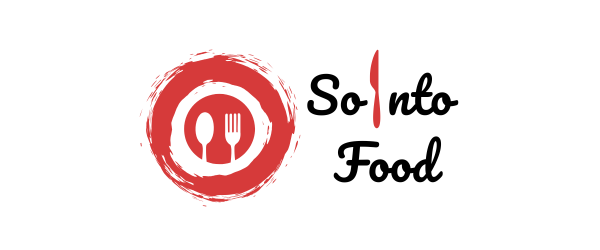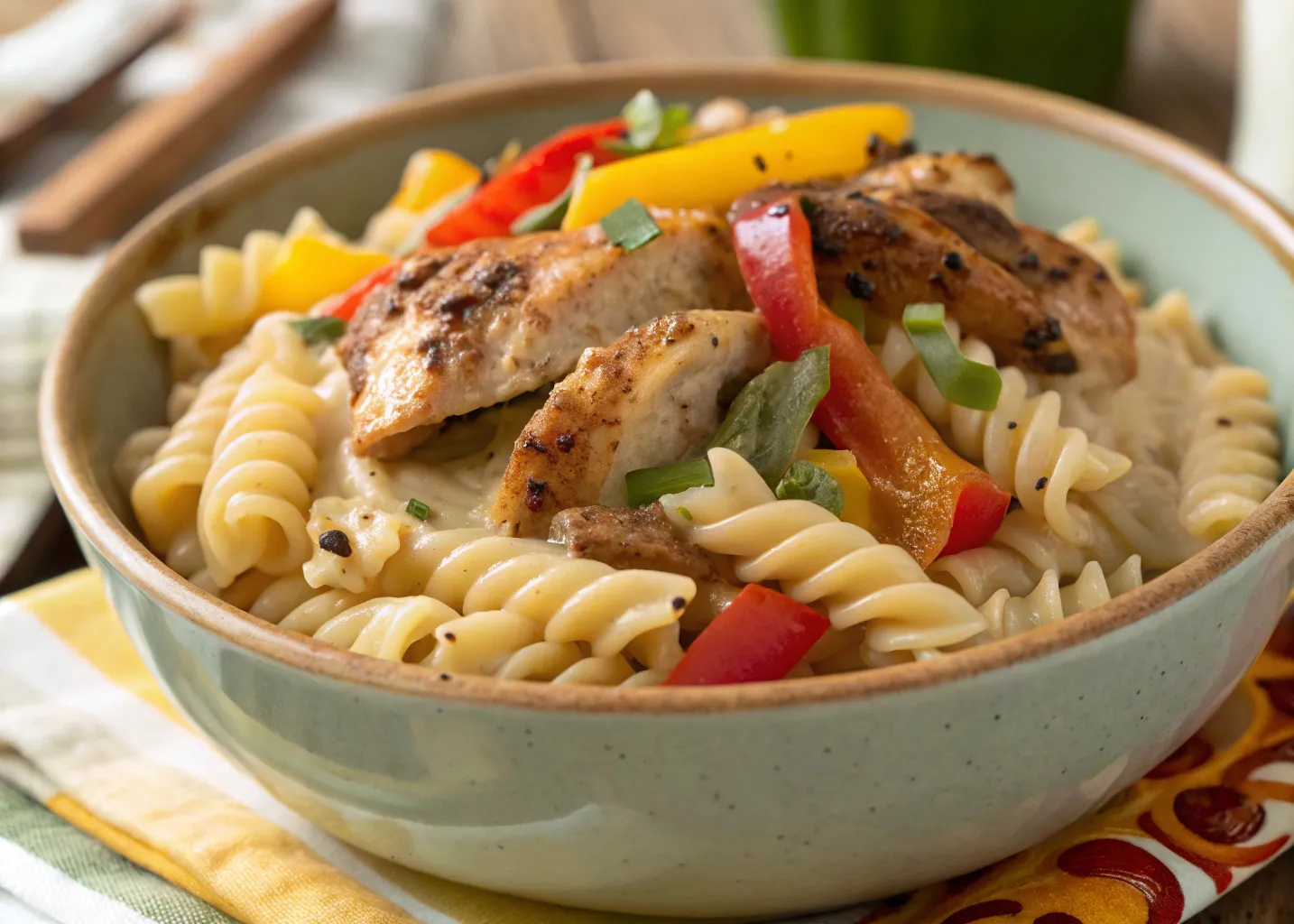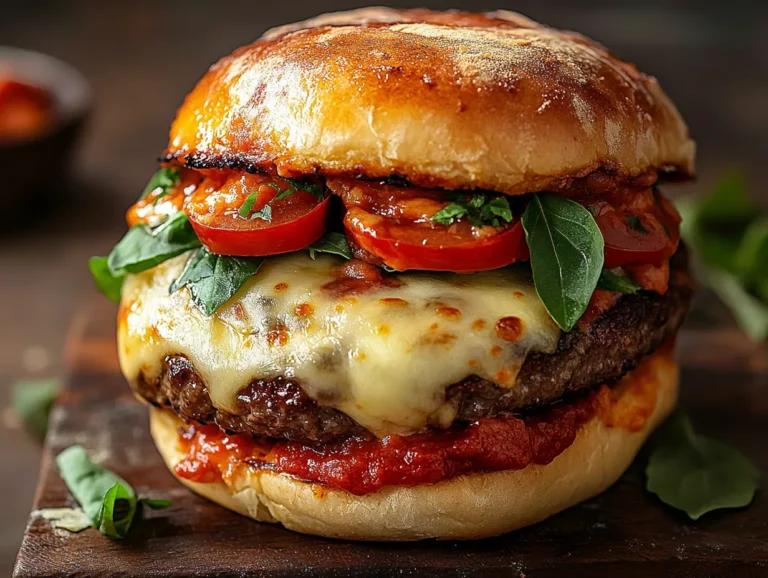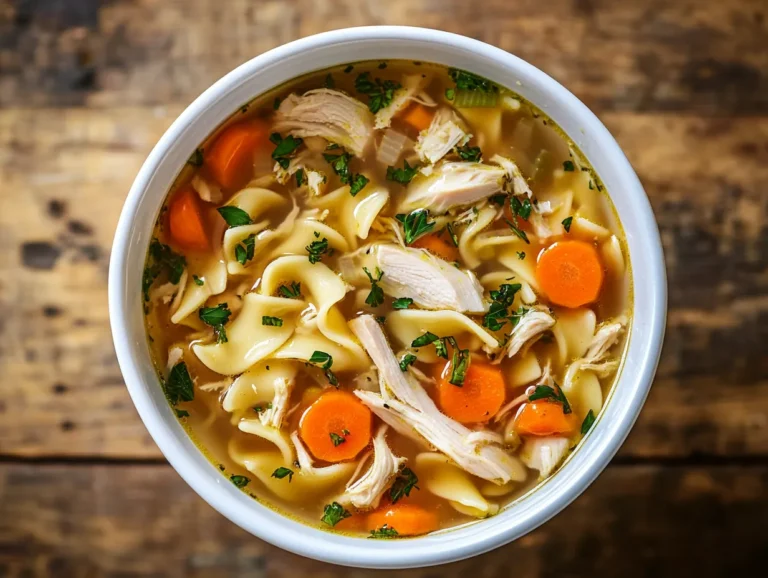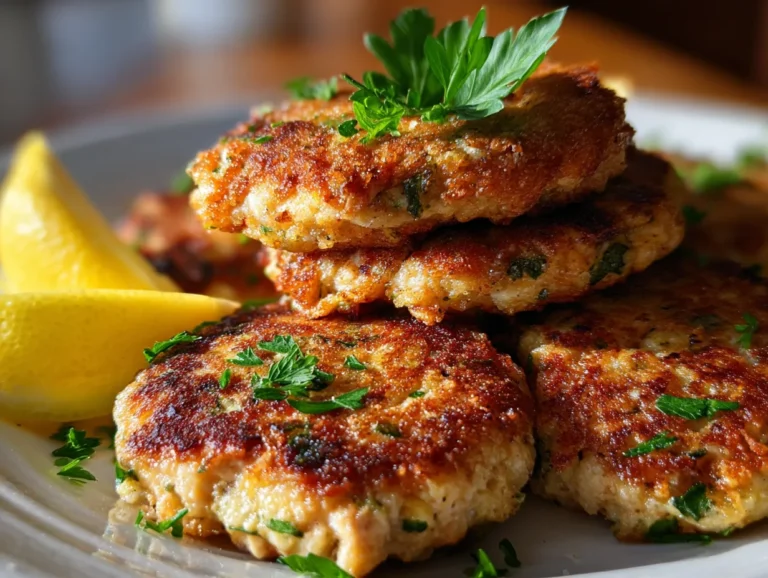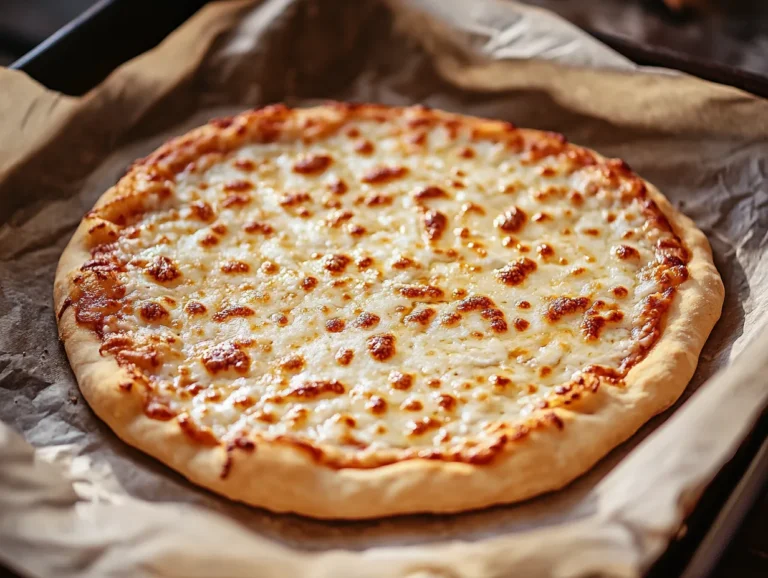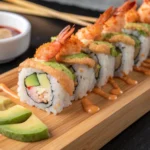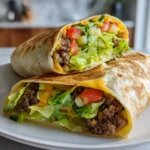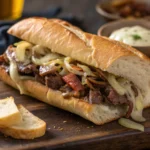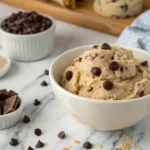If you’ve never heard of Rasta Pasta, you’re missing out on one of the boldest, most mouthwatering fusion dishes out there. This colorful, creamy, and spicy pasta is packed with the Caribbean’s fiery jerk flavors mixed into an Italian-inspired creamy sauce. Sounds like a flavor bomb, right? That’s exactly what it is.
Whether you’re cooking dinner for the family or trying to impress guests with something new, this Rasta pasta recipe hits the spot. With bell peppers that bring the color, jerk-seasoned chicken or shrimp that brings the heat, and a rich, velvety sauce that ties it all together—this dish is comfort food with a tropical twist.
Check out our spicy, creamy Cajun chicken Alfredo recipe if you’re craving another bold pasta twist.
In this guide, you’ll learn everything from the ingredients and jerk paste secrets to cooking tips and easy substitutions, even if you’re going plant-based. No fluff, no filler—just a straightforward path to your new favorite pasta recipe. Let’s dive into the flavorful world of Rasta pasta.
What is Rasta Pasta? The Caribbean-Italian Fusion Everyone’s Craving
The Origin of Rasta Pasta
Rasta pasta isn’t something you’d find in traditional Jamaican cookbooks, but it was born in Jamaica. The story goes back to 1985, when chef Lorraine Washington accidentally created it while cooking for some Rastafarian construction workers. She tossed together fettuccine, colorful bell peppers, and a creamy cheese sauce with jerk spices—and the workers kept asking for it. The name “Rasta Pasta” stuck.
So no, it’s not a classic Italian or strictly Caribbean recipe. It’s a bold, modern fusion that combines Caribbean heat with Italian comfort. And it’s one of those dishes where every bite tells a story.
Why It’s Called Rasta Pasta
The name pays homage to the Rastafarian culture, especially the use of red, green, and yellow bell peppers—reflecting the Rastafarian flag colors. While most traditional Rastafarians are vegetarian, many modern versions of this pasta include jerk chicken, shrimp, or other proteins. Don’t worry, we’ll also cover how to make delicious vegan versions later.
Is Rasta Pasta a Real Thing?
Absolutely. Rasta pasta is as real as it gets. It’s now a staple in many Caribbean restaurants and food trucks, especially in the U.S., Canada, and the UK. From jerk shrimp Rasta pasta to vegan versions with coconut cream, it’s become a go-to comfort dish across cultures. Social media chefs, food bloggers, and even fine-dining spots are adding their own twist to it.
So yes—it’s real, delicious, and here to stay.
Rasta Pasta Ingredients Breakdown
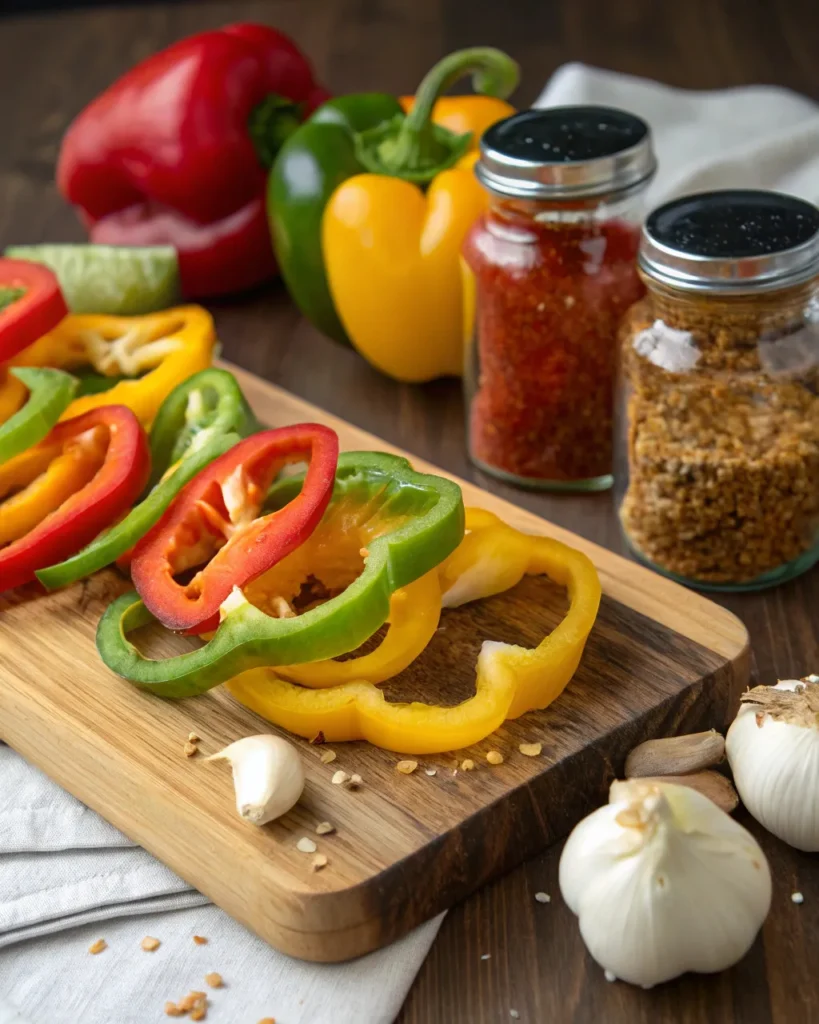
What Are the Ingredients in Rasta Pasta?
The magic of Rasta pasta lies in its balance of heat, cream, and color. Here’s a breakdown of what goes into a classic Rasta pasta recipe:
| Ingredient | Purpose |
|---|---|
| Pasta (penne, fettuccine) | Acts as the base and soaks up the sauce |
| Bell peppers (red, green, yellow) | Adds color, crunch, and sweetness |
| Onion, garlic, scallions | Aromatics for depth of flavor |
| Jerk seasoning or paste | Brings the Caribbean heat and spice |
| Protein (chicken, shrimp, tofu) | Optional but adds richness |
| Heavy cream or coconut milk | Makes the sauce creamy and smooth |
| Parmesan or vegan cheese | Brings salty, cheesy flavor |
| Olive oil or butter | For sautéing and richness |
| Salt, black pepper, thyme | Basic seasoning for flavor layering |
Each of these ingredients plays a role in making this dish vibrant, rich, and unforgettable. You can go as spicy or as creamy as you like, and it’s easy to adapt for dietary needs.
Key Proteins: Jerk Chicken, Shrimp, or Vegan Options
Jerk Chicken is the most common protein in Rasta pasta. Marinated in jerk seasoning and seared until charred, it brings a smoky, spicy punch to every bite.
Shrimp is another popular option—quick to cook and a great choice if you’re looking for something lighter but still indulgent.
Vegan alternatives include tofu, tempeh, or plant-based chicken substitutes. These soak up the jerk marinade beautifully and make the dish accessible for everyone, no matter their diet.
Prefer beef? Try this savory pepper steak recipe for another weeknight comfort winner.
The Role of Bell Peppers, Scallions, and Aromatics
Bell peppers do more than add color—they bring sweetness and a crisp texture that contrasts beautifully with the creamy sauce and spicy jerk flavor. Use all three colors (red, green, yellow) for that full Rasta visual appeal.
Scallions, garlic, and onion lay down the flavor foundation. They create depth and umami that carry the sauce from bland to bold. Be sure not to skip these.
Rasta Pasta Sauce Secrets
Can I Use Coconut Milk in Rasta Pasta?
Yes, and it’s actually one of the best choices—especially if you’re going dairy-free or leaning into a more island-inspired flavor. Coconut milk adds a rich, silky texture and a subtle sweetness that balances out the spice from the jerk seasoning. It also makes the dish feel lighter than using heavy cream.
Use full-fat coconut milk from a can, not the boxed beverage kind. You want that creamy consistency, not a watery sauce.
Can I Use Heavy Whipping Cream for Rasta Pasta?
Absolutely. If you prefer a richer, more indulgent pasta sauce, heavy cream is your go-to. It thickens beautifully and carries all the spices and seasonings well. Some cooks even combine coconut milk and heavy cream to get the best of both worlds: a creamy texture with tropical undertones.
Whether you use cream, coconut milk, or a vegan alternative like oat cream, make sure to simmer it gently to prevent curdling and allow it to absorb the jerk spices fully.
What Are the 4 Ingredients in Pasta Sauce?
If we strip it down to the essentials, any basic creamy Rasta pasta sauce needs these four elements:
- A fat base – Olive oil or butter
- Aromatic vegetables – Garlic, scallions, onions
- Liquid – Heavy cream or coconut milk
- Seasoning – Salt, pepper, jerk spice, thyme, and cheese (or nutritional yeast for vegan)
Of course, you’ll layer in extras for depth—like parmesan, fresh herbs, or lime juice—but that’s your base. It’s simple, but every element must be cooked just right for a silky, flavorful result.
How to Make Homemade Jerk Seasoning Paste from Scratch
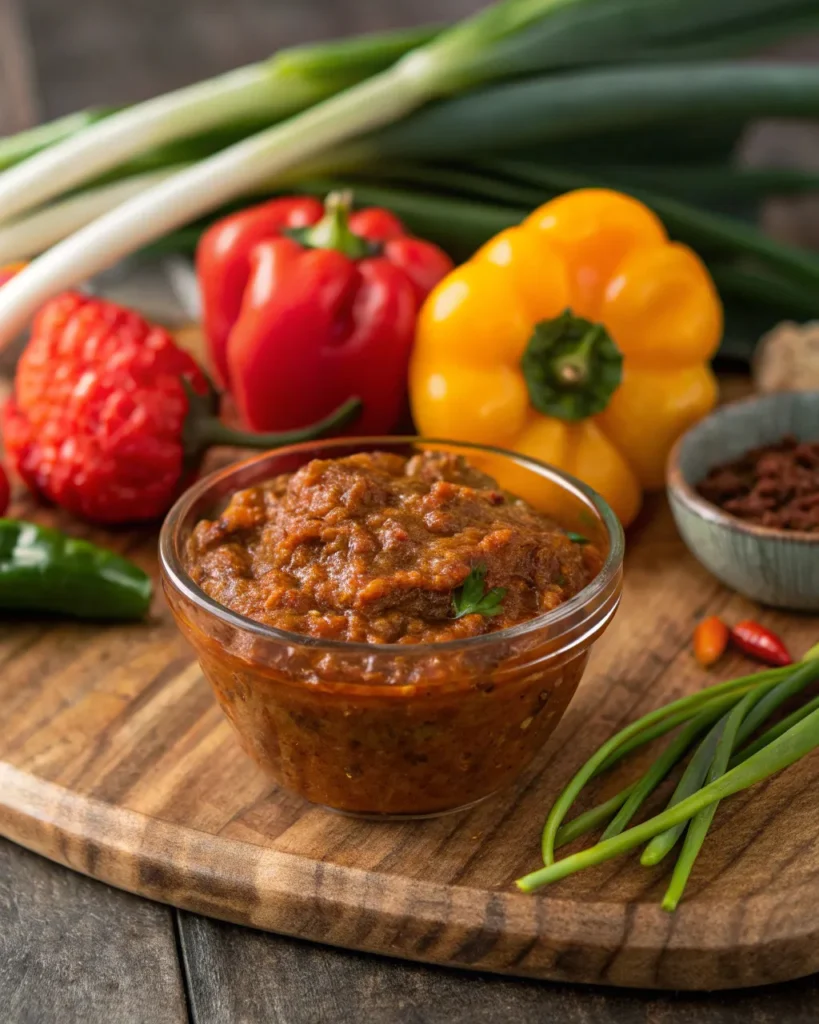
How to Make Jerk Paste?
Store-bought jerk seasoning can work in a pinch, but homemade jerk paste delivers deeper, more authentic flavor. Here’s a classic jerk paste recipe you can whip up in minutes:
Jerk Paste Ingredients (makes about ¾ cup):
- 3–4 scallions (chopped)
- 2–3 cloves garlic
- 1 small onion
- 1–2 Scotch bonnet peppers (or habanero for milder heat)
- 1 tbsp fresh thyme
- 1 tbsp allspice
- 1 tsp cinnamon
- 1 tsp ground nutmeg
- 2 tbsp soy sauce
- 1 tbsp brown sugar
- Juice of 1 lime
- Salt & black pepper
- 2 tbsp olive oil
Instructions:
- Add everything to a food processor or blender.
- Blend until you have a thick, smooth paste.
- Taste and adjust salt or heat to your preference.
This paste keeps well in the fridge for up to a week or can be frozen in cubes for later use.
Best Spices for That Authentic Island Kick
Allspice and thyme are the cornerstones of jerk flavor. The heat comes from Scotch bonnets, but if you’re not into spice, use fewer peppers or remove the seeds. Cinnamon and nutmeg give it a warm, earthy undertone, while lime juice adds that necessary tang.
Store-Bought vs Homemade: What’s Best for Flavor?
Homemade wins. Always. The freshness of the herbs and aromatics in a homemade jerk paste is unmatched. Store-bought mixes tend to be saltier, less vibrant, and more one-note. However, in a pinch, you can mix high-quality dry jerk seasoning with olive oil, garlic, and lime juice to get a decent shortcut version.
Step-by-Step: How to Make Authentic Rasta Pasta
Now let’s get down to it. Here’s the full process for creating your creamy, spicy, colorful Rasta pasta at home—from prep to plating.
Preparation and Mise En Place
Before you start cooking, have everything ready:
- Slice your bell peppers
- Chop scallions, garlic, and onion
- Marinate your protein in jerk paste (30 minutes to overnight)
- Grate your cheese (or prep vegan alternatives)
- Set a pot of water to boil
A little prep goes a long way in making this a smooth cooking experience.
Cooking the Pasta to Perfection
Use penne or fettuccine—they hold the creamy sauce well. Salt your boiling water generously and cook the pasta al dente. Drain and set aside, but don’t rinse—it helps the sauce cling better.
Building the Sauce and Flavor Layers
- Heat olive oil in a large skillet.
- Sear your jerk-marinated protein until cooked through and slightly charred. Set aside.
- In the same pan, sauté garlic, scallions, and onion until soft.
- Add sliced bell peppers and cook until just tender (don’t overcook—they should still have a bite).
- Pour in heavy cream or coconut milk and bring to a gentle simmer.
- Stir in jerk seasoning or leftover marinade. Adjust salt and spice.
- Add grated parmesan or nutritional yeast and stir until melted and creamy.
Now you’ve got the heart of the dish—the Rasta pasta sauce.
Combining Pasta, Protein, and Sauce Together
Add your cooked pasta to the sauce and toss to coat. If the sauce is too thick, use a splash of pasta water to loosen it up.
Toss in your cooked protein, garnish with fresh scallions, and maybe a sprinkle of lime zest for brightness. Done.
Don’t miss our iced matcha latte recipe — the perfect cool pairing to balance the heat in this dish.
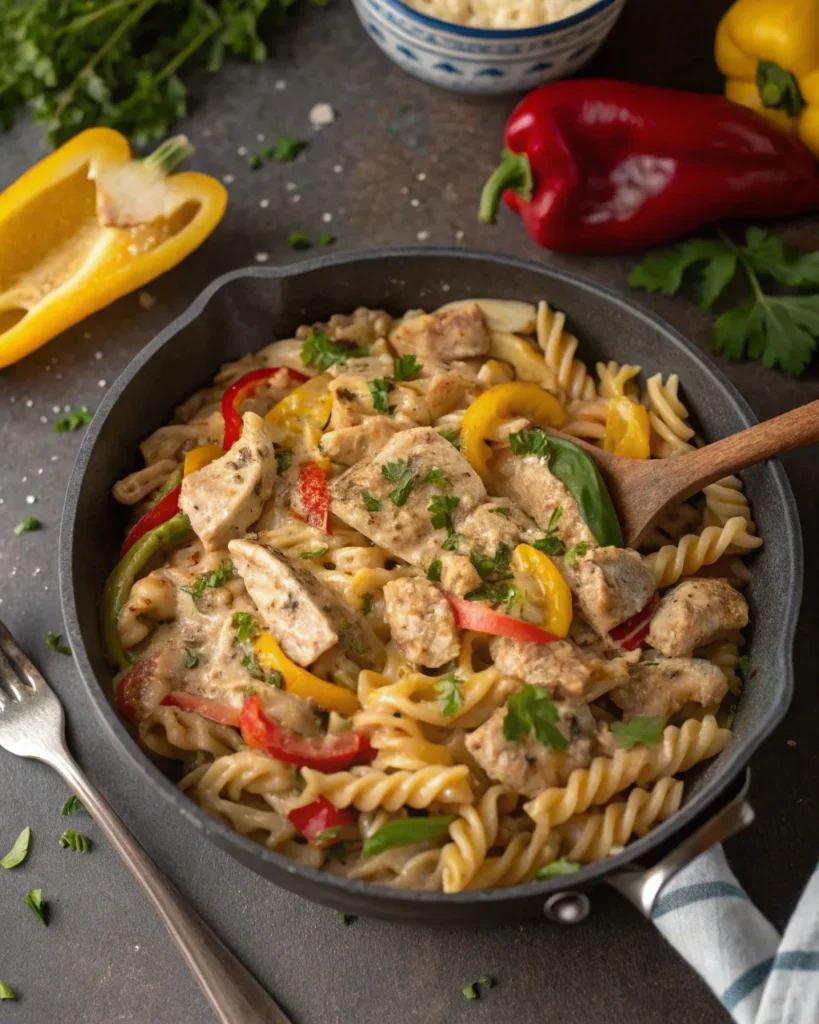
Rasta Pasta Variations You’ll Love
One of the best things about a great Rasta pasta recipe is how versatile it is. Whether you’re keeping it classic with jerk chicken or exploring plant-based options, there’s a version of this dish for everyone.
Jerk Shrimp Rasta Pasta
Want a quicker, lighter version? Shrimp cooks in just a few minutes and soaks up the spicy jerk flavor like a sponge. Here’s how to do it:
- Marinate peeled shrimp in jerk seasoning for 15 minutes.
- Cook the shrimp in a hot pan until they turn pink and curl up.
- Add it to your creamy bell pepper sauce for a tropical twist.
Shrimp works especially well if you’re serving Rasta pasta in warmer weather or looking for something a bit more elegant.
Vegan Rasta Pasta with Coconut Cream
You don’t need meat or dairy to enjoy a bold, creamy Rasta pasta. Here’s how to make it 100% plant-based:
- Swap heavy cream for full-fat coconut milk or oat cream.
- Use tofu, tempeh, or seared mushrooms as your protein.
- Replace cheese with nutritional yeast or a vegan cheese blend.
This version keeps all the Caribbean flavor while staying completely dairy-free and animal-free.
Rasta Pasta with Tofu or Plant-Based Chicken
For meat-free lovers who still crave that chew and bite, plant-based chicken or firm tofu works great:
- Press tofu to remove moisture, then cube and marinate.
- Pan-fry until golden and crispy.
- Add to the sauce just like you would traditional proteins.
It’s hearty, flavorful, and perfect for weeknight meals.
Tips for Perfecting Your Rasta Pasta Every Time
Even a simple dish can go wrong without the right tricks. These are the key techniques that elevate your Rasta pasta from good to unforgettable.
Balancing Heat and Creaminess
Jerk seasoning can bring serious heat. If you’re cooking for kids or spice-sensitive guests:
- Use fewer Scotch bonnets
- Add more cream or coconut milk
- Stir in a bit of sugar or honey to mellow the spice
Want more heat? Add a few dashes of hot sauce or extra jerk paste at the end.
Avoiding Overcooked Pasta and Mushy Veggies
Timing is everything. Cook pasta al dente and sauté your veggies just until they’re crisp-tender. You want the peppers to keep their shape and sweetness.
Reheating and Storing Tips
Rasta pasta stores beautifully. Here’s how:
- Store leftovers in an airtight container for up to 3 days.
- Reheat gently on the stove or microwave with a splash of milk or water to loosen the sauce.
- Avoid freezing—cream-based sauces can break when thawed.
What to Serve With Rasta Pasta
Rasta pasta is bold enough to stand on its own, but the right sides and drinks can complete the experience.
Best Side Dishes to Complement Rasta Pasta
| Side Dish | Why It Works |
|---|---|
| Fried plantains | Sweet contrast to spicy, creamy pasta |
| Jamaican rice and peas | Traditional and hearty with a hint of coconut |
| Garlic bread | Great for mopping up sauce |
| Side salad with citrus vinaigrette | Adds freshness and cuts richness |
Choose one or two for a balanced, crowd-pleasing meal.
Frequently Asked Questions
What are the ingredients in Rasta pasta?
The main ingredients are pasta (penne or fettuccine), bell peppers, scallions, garlic, onions, jerk seasoning or paste, heavy cream or coconut milk, and your protein of choice (like chicken, shrimp, or tofu). Cheese or vegan alternatives are also often included for richness.
Is Rasta pasta a real thing?
Yes! It’s a real Caribbean-Italian fusion dish that originated in Jamaica. It’s become a popular meal worldwide thanks to its bold flavors, colorful look, and endless variations.
Do you put coconut milk in Rasta pasta?
Yes, coconut milk is a common and traditional ingredient in many Rasta pasta recipes. It gives the sauce a creamy, tropical flavor and is great for dairy-free or vegan versions.
Can I use heavy whipping cream for Rasta pasta?
Absolutely. Heavy cream gives the sauce a rich and velvety consistency. It’s a great option if you prefer a more indulgent and cheesy finish.
What are the 4 ingredients in pasta sauce?
The base of creamy Rasta pasta sauce includes a fat (oil or butter), aromatics (onion, garlic), liquid (cream or coconut milk), and seasoning (jerk spice, salt, pepper, thyme). Cheese is often added as a fifth element for extra depth.
How to make jerk paste?
Combine scallions, garlic, onion, Scotch bonnet peppers, thyme, allspice, cinnamon, soy sauce, lime juice, brown sugar, salt, and oil in a blender or food processor. Blend until smooth and store in the fridge. Use as a marinade or sauce base.
Conclusion: Why Rasta Pasta Needs to Be in Your Weekly Meal Plan
Rasta pasta recipe isn’t just another pasta dish—it’s a celebration of bold Caribbean flavors, creamy Italian comfort, and creative fusion. Whether you go spicy with jerk chicken or light with shrimp and coconut milk, this recipe offers endless ways to suit your taste, mood, and diet.
It’s simple to make, full of color, packed with flavor, and easy to change for any diet. Once you taste it, you’ll wish you tried it sooner.
So grab your skillet, turn up your favorite reggae playlist, and bring a little island heat into your kitchen tonight.
👉 Love bold, cheesy pasta dishes? Try our Garlic Parmesan Chicken Pasta for a creamy, comforting dinner that’s ready in no time.
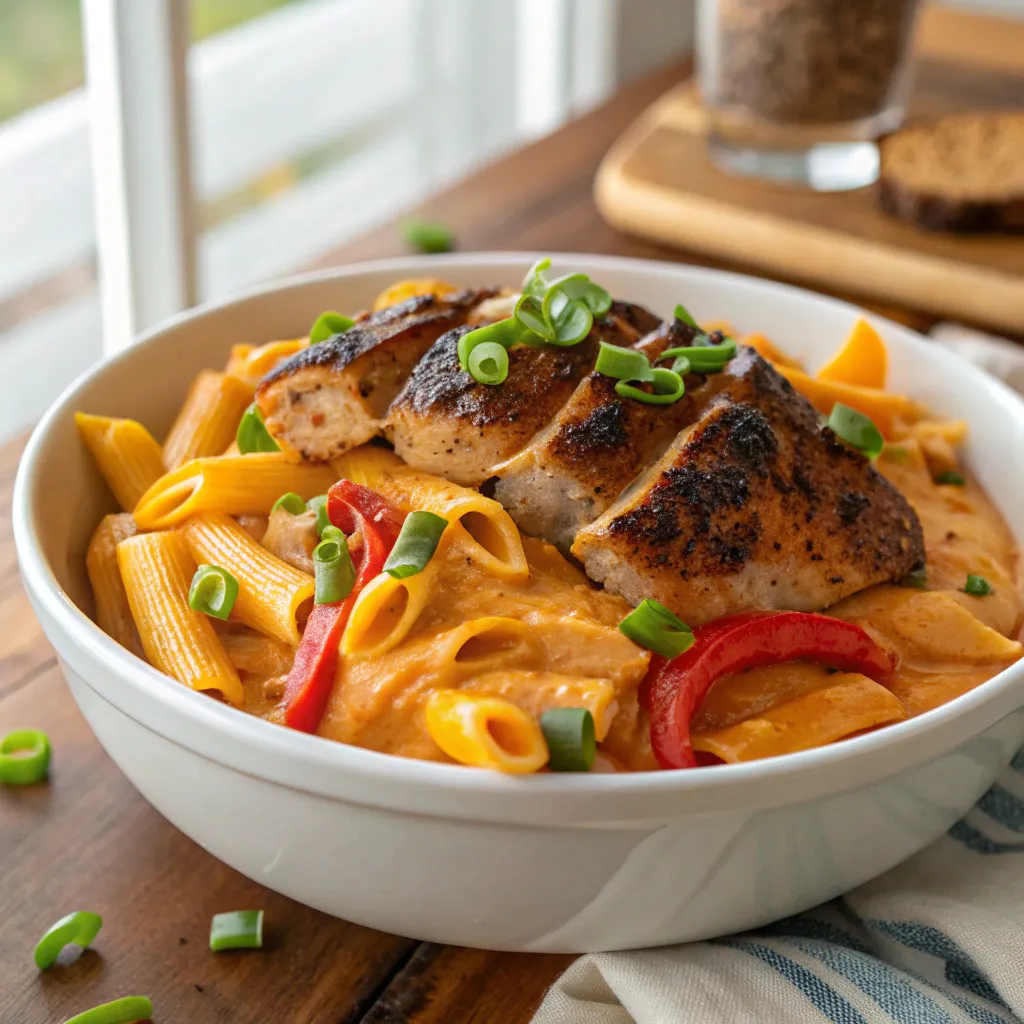
Rasta Pasta Recipe
Ingredients
Equipment
Method
- Cook the pasta in salted water until al dente. Drain and set aside.
- In a skillet, heat olive oil and cook the jerk-marinated chicken or shrimp until done. Remove and set aside.
- In the same pan, sauté onions, garlic, and scallions for 2–3 minutes.
- Add bell peppers and cook until just tender.
- Pour in coconut milk (or cream) and stir in jerk paste. Simmer for 3–5 minutes.
- Add grated cheese and stir until sauce is smooth.
- Mix in cooked pasta and toss to coat evenly.
- Return chicken or shrimp to the skillet and combine everything well.
- Taste and adjust seasoning with salt and pepper as needed.
- Garnish with scallions or lime zest and serve hot.
Notes
- You can use full-fat coconut milk for a dairy-free option.
- For extra spice, add more jerk paste or hot sauce.
- Vegan version: Replace protein with tofu or mushrooms and use plant-based cream and cheese.
